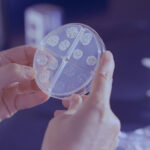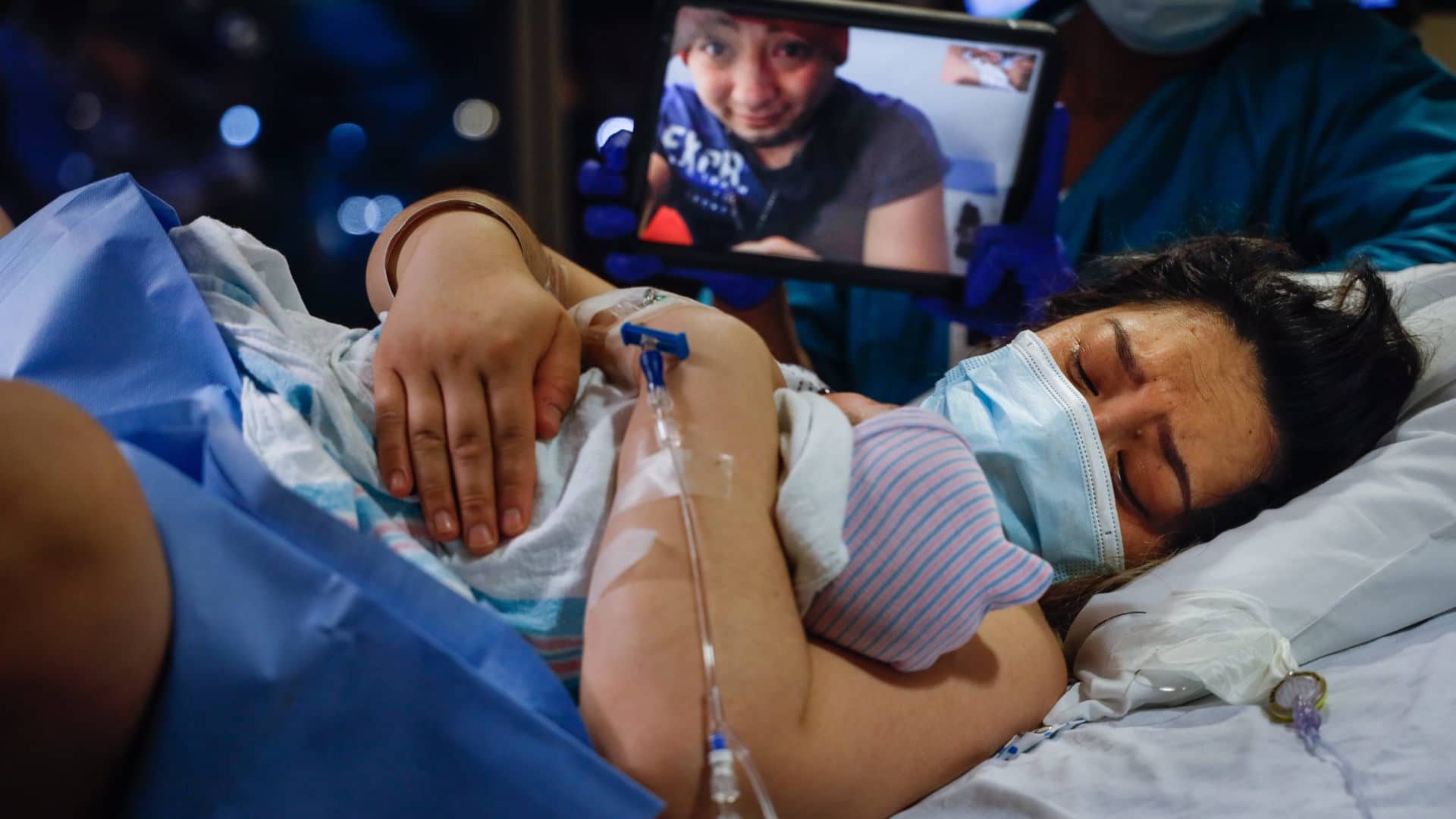In-Utero Alcohol Exposure: New Tools for a Difficult Diagnosis
By the time kids diagnosed with attention deficit hyperactivity disorder meet with clinical psychologist Mary O’Connor, they have often been taking multiple medications or unusually high doses of stimulants like Ritalin. “They may have had a trial of stimulants that worked initially,” she says, but when the effect waned, their physicians prescribed higher doses, sometimes to the point of toxicity.
O’Connor researches fetal alcohol spectrum disorders at the University of California, Los Angeles, where she has provided both diagnosis and treatment to children exposed to alcohol in the womb. At one end of the spectrum sits fetal alcohol syndrome, characterized by facial abnormalities, growth problems, and intellectual disabilities. The other end of the spectrum is characterized by subtler symptoms, including poor judgement and impulsivity — in other words, what looks to many like ADHD.
But experts say standard ADHD treatments often don’t work as well for children exposed to alcohol in-utero. And lack of awareness, a shortage of specialists, and social stigma have combined to limit families’ ability to receive an accurate diagnosis and support for FASD, a condition that is underdiagnosed in the United States and could affect between 1 and 5 percent of this country’s children. The lack of diagnoses, scientists say, stifles research on treatments and may even cloud data on therapies for other disorders.
Researchers, therefore, are searching for measurements called biomarkers — objective medical signs, such as the presence of a certain molecule in the blood — that will improve diagnosis and may provide clues as to which drugs and interventions are most likely to help patients. In a paper published last year, O’Connor and her colleagues found that brain scans measuring things like the diffusion of water through white matter in the brain could accurately distinguish ADHD with and without prenatal alcohol exposure. More work is needed to determine whether these scans might work in a clinical setting, but researchers hope that the search for biomarkers like these might ultimately lead to more accurate diagnoses.
The need has taken on new urgency, experts say. Alcohol consumption increased in the U.S. during the Covid-19 pandemic, and some suspect that this has led to an increase in children exposed to alcohol in the womb. Jonathan Sher, a public health advocate who leads the Healthier Pregnancies, Better Lives program at the Queen’s Nursing Institute Scotland, says that the stress wrought by the pandemic has created an environment in which “the risk of more FASD is actually pretty obvious and pretty heightened.”
It’s only been about 50 years since scientists started to document the effects of in-utero alcohol exposure. Fetal alcohol syndrome, the most severe form of FASD, was first described in a study published in 1973. At the time, “people didn’t believe it,” says Joanne Weinberg, a neuroscientist at the University of British Columbia. Doctors considered the effects of alcohol on the fetus to be relatively benign. Some obstetricians would even administer alcohol intravenously to women who were at risk of a preterm birth in hopes of staving off labor.
Over time, researchers learned that the effects of in-utero exposure can vary dramatically based on the timing, dose, and even the genetics of the fetus. Patients with a fetal alcohol spectrum disorder can experience a range of effects from difficulty with attention and impulse control, to growth deficiencies and more. “Every child seems to be different,” says Elizabeth Elliott, a professor of pediatrics and FASD expert at the University of Sydney, in Australia.
Today, many women know that alcohol can be damaging to a fetus, but experts say some may consume alcohol during the first trimester before they know they’re pregnant, struggle to abstain due to an untreated alcohol use disorder, or hold the misconception that smaller amounts or certain types of drinks like red wine are safe in pregnancy.
The proportion of people with FASD is “much higher than conditions like Down syndrome or cerebral palsy or even autism spectrum disorder,” behavioral scientist Elizabeth Dang said in a talk as part of a fellowship through the Association of Health Care Journalists and the Centers for Disease Control and Prevention. But too often, she said, fetal alcohol spectrum disorders go “undiagnosed or misdiagnosed or treated with the wrong medications that won’t help.”
In July 2020, Sher published a letter in The Lancet, warning of the possibility of FASD as preventable “collateral damage” of the pandemic. Drinking among pregnant people had been on the rise before the Covid-19 hit, and some experts guessed the stresses of balancing work and caregiving may have exacerbated that increase. According to one study, women reported 41 percent more heavy drinking days in the late spring of 2020, after social distancing had set in and before vaccinations became available, compared with approximately the same time period in 2019. It’s not yet clear, however, that the pandemic caused a spike in consumption among pregnant women in particular, and a recent CDC report found that pregnant adults in the United States did not drink more in 2020 compared with the previous year.
Kathy Mitchell, vice president and spokesperson for FASD United (formerly the National Organization on Fetal Alcohol Syndrome), noted that more pregnant women called in to the organization looking for help to stop drinking during the pandemic compared with previous years. Normally she’d connect them to a local treatment center, but “there was nowhere to send them,” she said at the AHCJ-CDC fellowship talk. “I couldn’t get them in anywhere.”
Experts have known for some time that those with prenatal alcohol exposure require specialized treatment, like programs where children practice social skills that might come naturally to others, even if their symptoms match those of behavioral conditions like ADHD or language disorders. But the road to a diagnosis is complicated, and many patients simply lack access, physicians say.
Currently, to receive an accurate diagnosis of fetal alcohol spectrum disorder, a patient must undergo a comprehensive battery of tests and also have a known exposure to alcohol in the womb, explains Susan Hemingway, a pediatric epidemiologist who runs the Washington State Fetal Alcohol Syndrome Diagnostic and Prevention Network. This often happens at a specialty clinic, where it can take four to six hours for an interdisciplinary team to assess growth deficiencies, cognitive function, and the facial features that accompany the most severe diagnoses, such as a thin upper lip, smooth philtrum (the vertical crease under the nose), a flat nasal bridge and midface, and small eyelid openings. Experts say there aren’t nearly enough clinics. One family in Maine had to drive almost two hours to see a specialist.
A physician or other clinician will typically ask for confirmation from the birth mother or other family members, or consult past medical or social service records in order to determine whether the individual was exposed to alcohol in-utero. In some cases, this is required prior to assessment. “At the moment, we only accept referrals of children where there’s known to be alcohol exposure during pregnancy,” says Elliott, speaking about her clinic in Australia. “Otherwise, it just opens the floodgates to hundreds and hundreds of kids with neurodevelopmental problems.” Hemingway says her clinic in Seattle employs a similar policy.
While this type of policy makes work manageable at clinics, it also excludes a lot of children who might have a fetal alcohol spectrum disorder. There’s little research on how often physicians ask, but a 2013 survey conducted at one medical school suggested that only about a third of doctors in the U.S. regularly ask patients who were pregnant or planning to become pregnant about their drinking, meaning they’re missing a crucial moment to lessen or even prevent the impact. If mothers aren’t screened, the child’s pediatrician can’t be notified about the mother’s drinking behaviors. If the individual was adopted or placed in foster care, there may be limited options for confirming an exposure.
And many pregnant people may be afraid to admit to drinking, even if doctors do ask. The public may judge mothers of children with FASD more harshly than those with other substance use disorders, mental illnesses, or those who have spent time in jail, according to a 2017 survey. Vanessa Parisi, a New Jersey-based OB-GYN and member of the American College of Obstetricians and Gynecologists’ FASD Prevention Program, cites difficulties in underreporting: “It was very challenging for me in the beginning to ask those questions and try to ask it in a way that I would actually get answers.”
As a result of all this, children with FASD often aren’t diagnosed until they “get into trouble,” says O’Connor. When she was working on the inpatient service at the UCLA neuropsychiatric hospital, she found that about a third of the kids she saw had undiagnosed prenatal alcohol exposure. “They’d never been asked. They’d never been diagnosed.”
Once the patients receive a diagnosis, they can be treated by the same psychiatrists, counselors, therapists, and teachers that they may have already been working with, but the way that treatment is delivered might change. For example, instead of going over class rules at just the first meeting of an ADHD treatment program, instructors might repeat the rules at the start of every lesson, to accommodate memory problems, says O’Connor. “If the therapists are trained to do that, then these kids can be treated in a community mental health setting with other kids with ADHD.
The first traits used to diagnose fetal alcohol spectrum disorders were the facial features that now characterize fetal alcohol syndrome. In 1981, Kathleen Sulik, with colleagues at the University of North Carolina at Chapel Hill, showed that mice exposed to alcohol in-utero developed the same unique features. Weinberg, the neuroscientist at UBC, says the study was “really powerful” and a “very critical study in the field.” It confirmed that exposure to alcohol at a particular time in early gestation could cause specific facial effects.
These features tend to develop in patients exposed to alcohol between gestational weeks seven and 12. But alcohol exposure at other points in pregnancy can disrupt development of the brain and other bodily systems without changing the face, depending on dose and timing of the exposure. Facial features, therefore, can only identify a small subset of patients. The presence of alcohol metabolites in a pregnant person’s blood — or in a baby’s first fecal matter — could potentially identify an additional subset. But because these metabolites break down quickly, the window for testing is limited.
Advances in molecular biology and imaging have allowed scientists to explore many more possible biomarkers from the structure of the brain to molecules that regulate gene expression. As of yet, none can act as definitive diagnostic tools, but some have yielded clues as to how alcohol affects the developing fetus.
“A classic example,” of the importance of an accurate diagnosis, said Dang, is where people get diagnosed with ADHD but then they’re “prescribed medications that won’t work. And then the family and the physician is wondering why it doesn’t work.”
O’Connor and her colleague Joseph O’Neill, a neurophysiologist, set out to find whether the difference between ADHD with and without prenatal exposure could be found through objective measures such as brain scans. They used a variety of neuroimaging techniques to look at the brains of patients aged 8 to 13 years old who had been diagnosed with ADHD, some of whom had known prenatal alcohol exposure. No single imaging technique could differentiate the two groups on its own with good accuracy. But by combining findings from different types of imaging techniques, the researchers found that patients with prenatal exposure to alcohol had a different combination of molecular and structural changes, such as the organization of white matter and the concentration of certain chemicals in the brain. When looking at imaging techniques combined with neurobehavioral measures, the researchers were able to distinguish between the two groups with even better accuracy.
The researchers hypothesize that drugs that use a different mechanism may be more effective than stimulants for FASD patients with ADHD symptoms.
O’Connor and O’Neill point out that differences in biology and responses to treatment, like the ones seen in children with FASD and ADHD, suggest that researchers studying all kinds of neurological disorders should be screening patients for prenatal alcohol exposure. Screening could also help researchers better understand FASD, as well as other disorders. O’Connor adds that “it’s really important” that researchers studying any psychiatric disorder make sure that their results can’t be explained by prenatal alcohol exposure in a subset of their patients.
While many experts focus on the neurological components of the disorder, alcohol also affects development of bodily systems beyond the brain. FASD patients “have all kinds of problems that are unrecognized and unappreciated,” says Weinberg. Biomarkers can help scientists identify the specific systems altered by alcohol. For example, some “develop autoimmune disorders in their 20s, way before typically developing individuals develop them,” Weinberg explains. Her team has found immune markers unique to prenatal alcohol exposure.
Others are probing the patients’ epigenetic profiles — molecular markers that belie changes in gene expression — to look for a diagnostic signature, as well as clues as to how two children exposed to similar levels of alcohol in-utero might end up with different constellations of symptoms.
Advocates are working to train community health care workers to recognize the signs of FASD and refer those affected to specialized clinics. Biomarkers could strengthen their confidence in these referrals. O’Connor and O’Neill hope to develop protocols so any trained technician can use scans and behavioral testing to diagnose patients at mental health clinics.
After seeing a young inpatient last year who was on four medications including a heavy dose of an antipsychotic, O’Connor says, “It’s just very painful to see this happening and the lack of hope that the parents had.”
“The question,” she says, “is could he have been diagnosed earlier and could he have been managed better by people who understood this diagnosis better?”
Emma Yasinski is a freelance science journalist whose work has been published in The Scientist, Discover Magazine, and Kaiser Health News, among other publications.












Comments are automatically closed one year after article publication. Archived comments are below.
Our developmental pediatrician, who specializes in kids adopted internationally, prescribed a med for our son whom we believe has a form of FASD. He said the behaviors of ADHD and FASD overlap, but kids with FASD must be medicated differently. This was 12 years ago. Surely these researchers had considered working with the very few experts on this in our country? Seems crazy to start from scratch.
It is worth remembering that women would still drink some alcohol when pregnant and those children are now in their Fifties or Forties with no problems. Moderate drinking certainly but no-one thought twice about having a couple of glasses of wine with dinner or a cocktail at night and with no ill effects.
It is worth remembering that for many centuries, beer and sometimes wine were more likely to be drunk through the day because the water was not safe. There is a risk from excessive drinking but not from drinking per se: